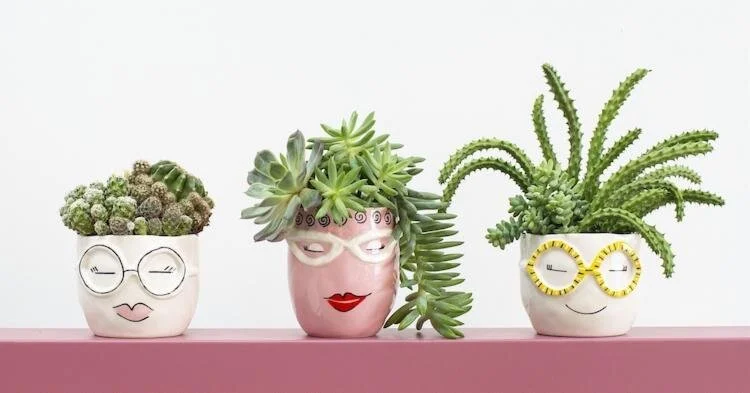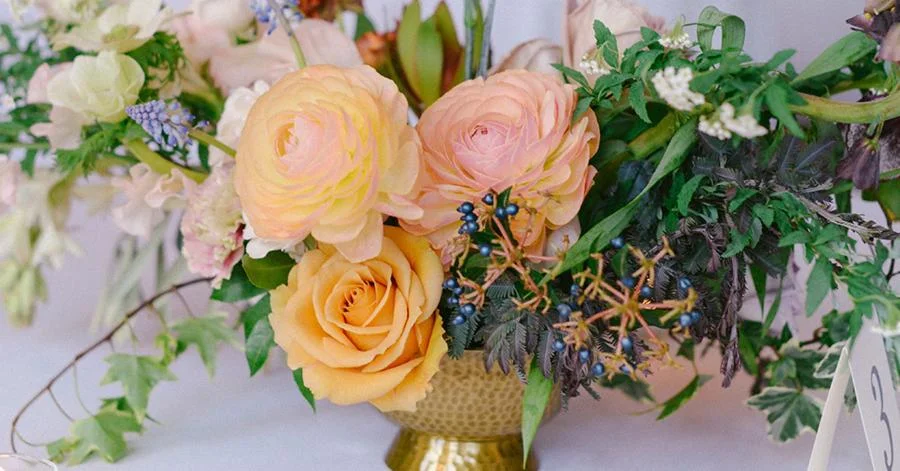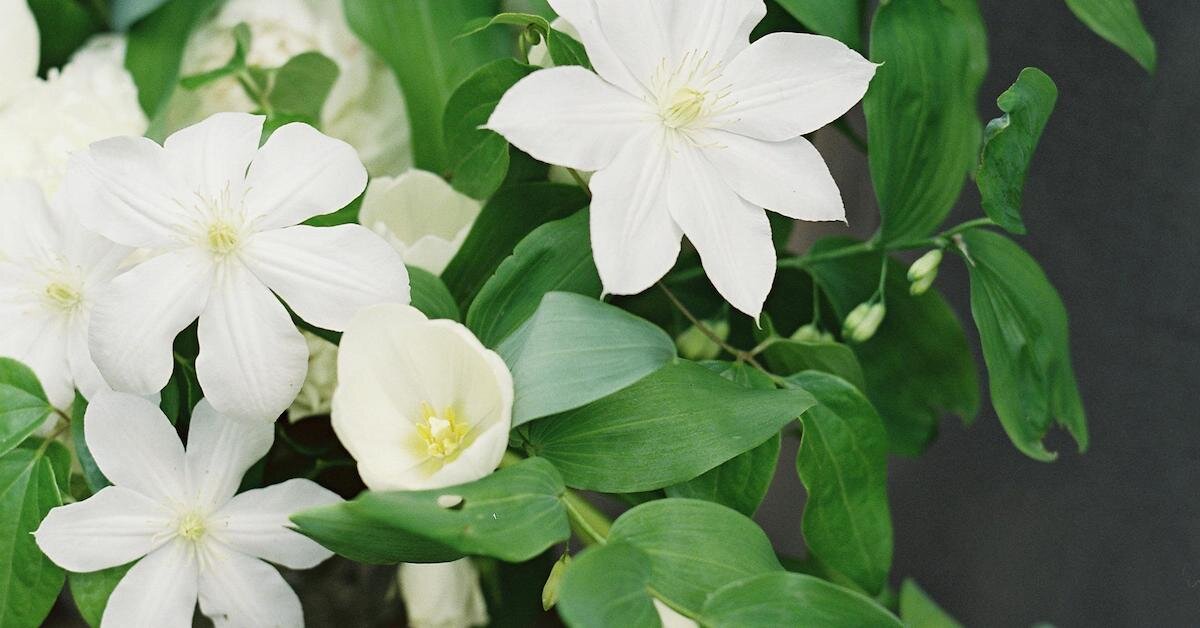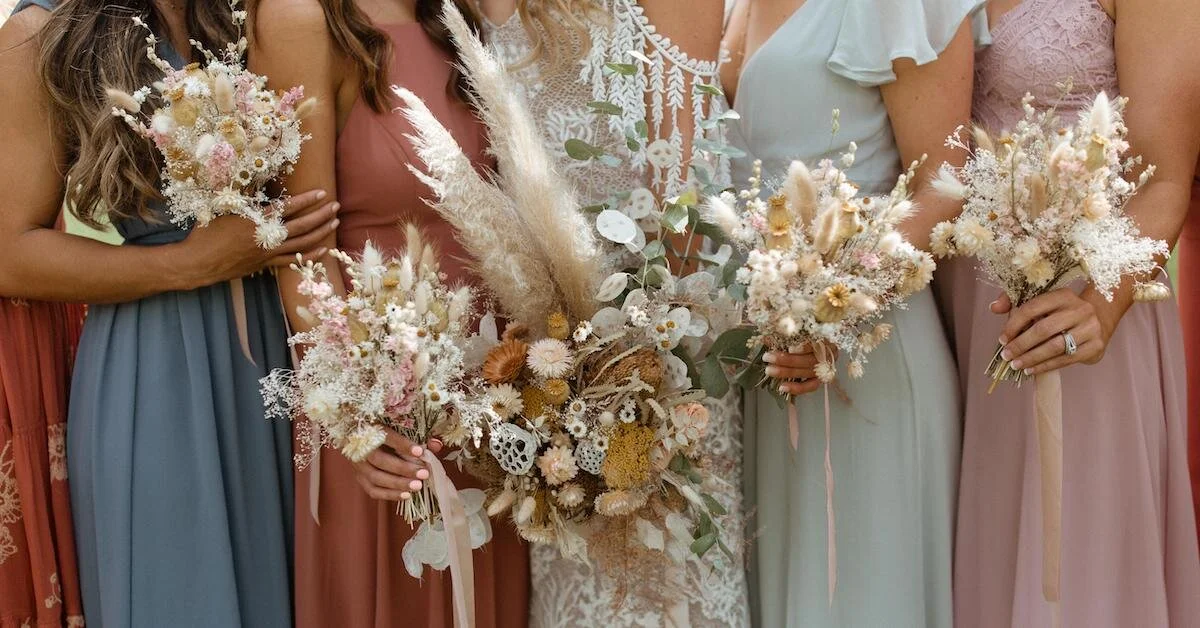Every year, Accent Decor searches the globe to find quality products to serve the floral community. And each season they share exciting new products from their trend stories, both online and at market shows around the country.
Preparing Your Floral Business for Mother's Day
Second only to Valentine’s Day in the floral industry is—yes, you guessed it—Mother’s Day! A day to acknowledge and celebrate both the joys and hardships motherhood brings with it. With the current state of things in the world, you may have a lot of questions about what this holiday looks like this year for the floral industry. We’ve pooled our resources to help you find success, and hope that after reading this article, you feel both prepared and empowered to keep loving the world through flowers!
Video: Spring Wedding Flowers for Arranging
Learn how to arrange flowers for a wedding. In this video, you'll see some of floral designer Kelly Perry's favorite flowers for spring wedding arrangements.
Transcript
Today I'm going to show you some wonderful flowers that you can use for your next spring event. Some of these are just available in spring. Some are available year round. We'll go through the list and I'll let you know when these are usually available.
One of my favorites and a staple that I like to use in my events is called the White Majolica spray rose. I love this because it easily transitions from blush to cream. And a lot of times within the bunch you'll have a variation of those shades.
So if you're working with a bride that loves blush, this is a great option for a flower for her. If you need a spray rose that is a true white, you might want to look at something like princess or snow roses.
What I love about White Majolicas is that they open really beautifully. And you can just pluck away some of those inner petals and get that great, beautiful, golden center if you would like.
These are available usually year round. They do have a pretty big spike in price increase midsummer, whenever they're in really high demand. So that's something you want to talk to your wholesaler about.
And maybe that's something that will affect you in your area. Maybe it's not. But it's something that I've run into. So that's the White Majolica spray.
These are combo roses. They're really unique color and I love them. There's also a rose called camel that might be a great substitute if your wholesaler isn't able to get combo roses.
I love these. As they open they just-- they're really beautiful and a unique color that transitions well between a lot of different palates. So this is kind of one of my staple flowers as well.
The last rose-- well, we have two more here. This one that we're working with today is called the amnesia rose. It's a little bit lavender, a little bit dusty pink. Has some green tones in here. So it's really great if you're working with a muted palate.
And then another one that I think pairs so beautifully with White Majolicas and also a quicksand rose is this champagne rose. How beautiful is that? They have a lower pedal count so they open wide. And it's one of my absolute favorite roses.
This is a standard rose. Every rose that you've seen here is a standard rose. So they come with that standard price tag, which is great.
This is spirea. And one of my favorite greens. It's great to grow in your yard if you have the space. It just grows wild and crazy. And you can cut it and it grows back fairly fast.
So this is something that I get locally. You can also get it wholesale sometimes as well. But just a really sweet texture to work with.
This is purple feather acacia. And it does have a tendency, and this is a little bit, to wilt at the end. So make sure that you always have this in a good water source.
This is kind of what it looks like when it first arrives. But once this takes up some water and is really well-hydrated, this will perk back up a little bit.
But the color variance in it is really interesting and great. It kind of goes from like a silvery tone, like that would pair well with seeded eucalyptus. And it has this dark foliage, of course. And then some of it is actually-- kind of has like a little bit of a yellow undertone in it. So I think this is a really interesting foliage to use in projects.
This is blue Muscari. A really sweet flower that you'll commonly find in gardens. Maybe your mom or grandma has grown it or something. This is something that I really love and think of as a springtime thing.
If you are getting this locally, a little trick-- or you're growing it in your garden. Down toward the base, if you just pull as opposed to clipping it, you can get a little bit of a longer stem for these. Since these are something that have a very short stem.
But these are available wholesale pretty frequently as well in the spring. And that's just a spring thing. These are some Japanese Sweet Pea. The color variations in them is really beautiful and nice.
And they smell absolutely fabulous. The scent just filled up the whole studio when they arrived. I really love these.
This is called fruitalaria. And one of my very favorites. It comes in several different varieties. So this is just one variety of fruitalaria Here is another variety.
And they do have a little bit of an unpleasant scent, but it's not to the extent that it would bother me. But it definitely is a difference between the sweet peas in the fruitalarias as far as how they smell.
This is called leucadendron. And a lot of times, maybe you've seen this at your wholesale. This is a very, very common wholesale plant. But you'll probably see it looking a little something like this and maybe not all that attractive.
But you'll see, and if you read a little bit on our blog reflexing flowers, you can just gently coax those to flip inside out. And you have a really interesting flower to work with. And check out the color variation on the inside.
This variety is called Safari Sunset. And I think it's a great substitution for brides who might like the look of a magnolia. If they're open to color, this is a direction-- it reminds me of that shape, and the center, and everything.
These are viburnum berries. Very beautiful, and some of them almost look iridescent in color. These are available locally and also through wholesale.
This is ranunculus. One of the smaller varieties. And then here you have some of the beautiful hybrid Japanese ranunculus that, in some cases, are as big as a peony or a large faced flower. So those are two varieties of ranunculus that are available in the spring.
This is an antique carnation. I really love the color variations in here. And again, if they come to you and they're closed you can just gently coax them open. I think these are a really, really lovely flower.
Here we have some anemones. These love it in the chill, in the cold. That's something that you'll find in the winter as well as the spring.
This is some Japanese Lisianthus. A little bit more Japanese Sweet Pea. Some tulips here. This is passion vine.
We have a little bit of Jasmine vine. It's normally blooming around this time of year, you'll get it with the buds. But you can get it a lot of times year round, just the foliage.
Here we have some olive. This is a really sturdy foliage, holds really well.
And then last but not least, my very favorite flower. And something that a lot of people have commented, oh. It's all in your arrangement. Well it's my very favorite. I have this beautiful foxglove.
So it's one of my favorite flowers and I grow a lot of it here in the garden. This is coming in wholesale but that is another great flower. So that, in my garden, it blooms from summer the whole way through the fall. And the more you cut it, the more it pops up and keeps producing.
So those are just a few flowers that I wanted to share with you today. And I hope that you enjoyed it and that it inspires you to create more beautiful things for your brides.
How to Determine If You Need to Press Pause on Your Flower Business
The wedding and event industry has changed overnight. For some of us, it may mean dramatically pivoting and finding new streams of revenue. And for others, it may mean we must thoughtfully and carefully consider if it’s financially wise to continue on with our floral business during this season.
Happy Flower News: Lessening the Burden of Food Scarcity in Washington, D.C.
Need a sense of comfort—instead of anxiety? Find it here! With alerts dinging on our phones updating us on COVID-19 every hour, we thought it would be a nice change of pace to have this news report be a happy and hopeful one. In this series we’re calling Happy Flower News, we’ll share about the amazing things the floral community is doing through the power of flowers to spread joy, love, and hope!
You Can Lead in Your Local Floral and Event Community: Here’s How
In uncertainty, it’s easy to curl up in your safe-haven and shut out the things that are making life unsettled. You’ll likely find yourself experiencing a slew of emotions: anxiety, nervousness, loneliness, frustration, bitterness, hurt—the list could go on and on. The questions are endless. Where do I get flowers? Do I keep my shop open? What if I have events canceled? Where can I send those flowers? How will I pay my staff? Should I look at other revenue streams?
Flowers for a Weary World with Lambert Floral Studio
In this episode we are chatting about Sammy’s philosophy of providing flowers for a weary world and what that looks like for Lambert Floral Studio. He is sharing the story behind the name of his design studio and why it is dear to his heart.
How to Repurpose Wedding Flowers Through Floral Street Art
Hoping to find new ways to repurpose wedding flowers or reuse event flowers? We've all been there: consulting for months with a client, grinding out the perfect flower order in accordance to color and season, meticulously processing and caring for fresh product, and ultimately designing pieces of art for a wedding or event. For an incredible couple of hours, our flower arrangements are on display to the public like a momentary gallery opening of our talents until the breakdown.
Floral Client Inquiries: 5 Simple Ways to Give Grace When You Have to Say No
Let's talk about how we treat people behind all our inquiries. Not just our ideal clients — we lavishly love and adore those folks! But what about the less than ideal clients? The ones that never even become clients. How do we honor and show grace to them?
How to Practice Compassion Toward Yourself and Your Clients
Compassion is a regenerative emotion, which means it can rejuvenate your body and erase limiting beliefs. By incorporating compassion in your life, you'll likely be led to make wiser decisions and build healthy, long-lasting relationships. As you can imagine, this can have a significant impact on your work environment—whether you're a flower farmer, a shop owner, or an event florist.
Why Flowers Matter with Amy Balsters
In this episode, Kelly and Amy are talking about being intentional in your work with flowers and recognizing the healing power that flowers hold. Amy is sharing her recent curiosities and discoveries regarding the chain of supply for flowers and she’s chatting about how the practices we utilize today will impact the future of the industry. You’ll be inspired as she talks about how staying curious, researching, and asking questions has kept her work with flowers fresh and exciting for 20 years.
Creating Tracking Systems for Your Floral Business
Whether you’re in your first month or your fifth year of business, I’d encourage you to start keeping track of different areas in your biz. After all, how do you know what treatment is required if you don’t know the diagnosis? How do you know what solutions to implement if you don’t know what areas need improving? How can you keep on top of enquiries when you’ve dealt with 30+ different names in the last month? Systems.
Designing with Local Flowers: How to Make the Transition
If you’re thinking about making the transition to designing with locally grown flowers (but have no idea how to start or how to have that conversation with your clients!), don’t fret! With a little extra time and knowledge, you will be on your way to supporting American grown flower farmers. Below, there are three simple steps you can take in making this shift.
How to Overcome Obstacles
As members of the event world, we’re no strangers to chaos or the unexpected. You could even argue that we thrive on it to some extent! But when you add the pressure of working with live, fragile product to the normal stress of an event, and the day-to-day demands of running a business, you have the perfect storm. Some flower friends and I have been chatting (and laughing) about some of our most memorable challenges, and I’m sure you can relate…
Pressing Pause on Your Business
There can be many seasons when you own a small business. There are seasons of planting, of growing, of blossoming, and of harvesting (both literally and metaphorically). In the midst of any of these seasons, you may feel like quitting, but if you still feel called to flowers in some way, don’t give up! It may be time to simply press pause.
On Cancellations and the Current Client Need
Are you wondering if you’re able to weather a difficult economic season? Is this something your business will be able to get through? We think it’s possible, and we believe in you. Find comfort and share solutions among friends here!
Developing Crucial Skills for Event Design & Floral Retail
Our special guest on this episode is Jennifer Haf of BLOOM Floral Design (@bloomfloraldesign). BLOOM Floral Design is located in Northern Michigan and offers wedding and special event floral services in addition to curated gifts and fresh cut flowers in their retail flower shops. Wedding clients are the bulk of the business, as they cater to a lovely tourist crowd that overwinters up here during resort season. Jennifer is celebrating her twelfth year in the industry, and she’s working on purchasing a commercial building as a smart next step in her business in addition to relaunching her seasonal workshop series!
Designing with Dried Flowers: Things You Need to Consider
As florists, the details in our designs often represent our brand, and many of our clients come to us because of those details. And at the same time, our industry is continuously changing, and we can choose to evolve with it as we push ourselves creatively to find our voice, test new mechanics, explore fresh ideas, and develop our artistry.
Video: Designing Flowers on a Ledge with Ingredients that Last Out of Water
I’m designing on a windowsill using rocks and chicken wire. I love chicken wire! Not only is it moldable to various shapes, but it’s also a multi-use product (so you can use it more than once). I’m using dill and bupleurum as my base for this installation.




















